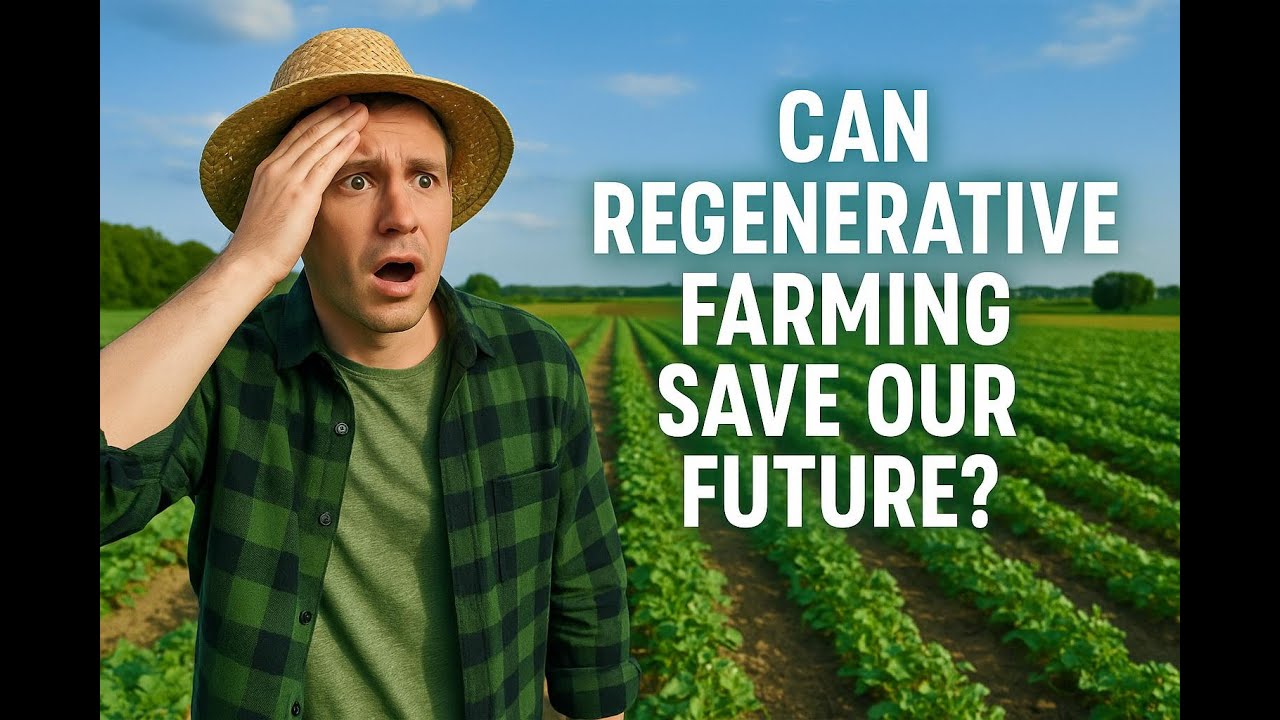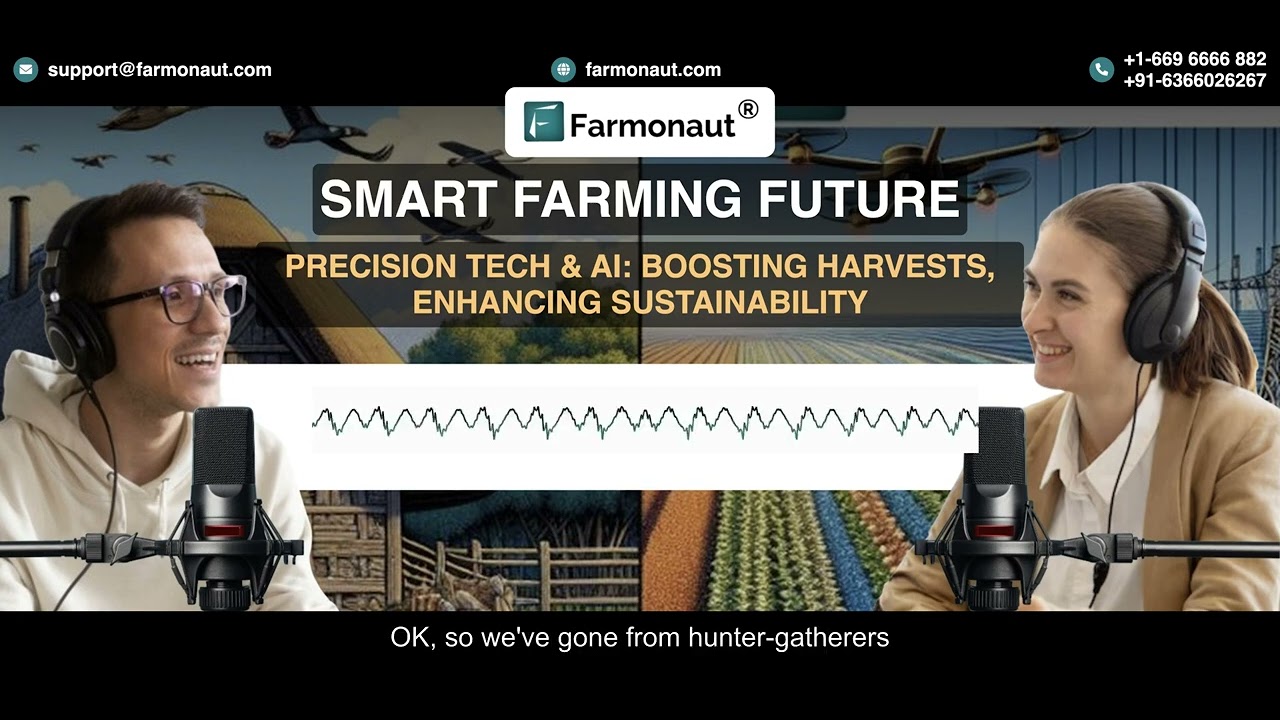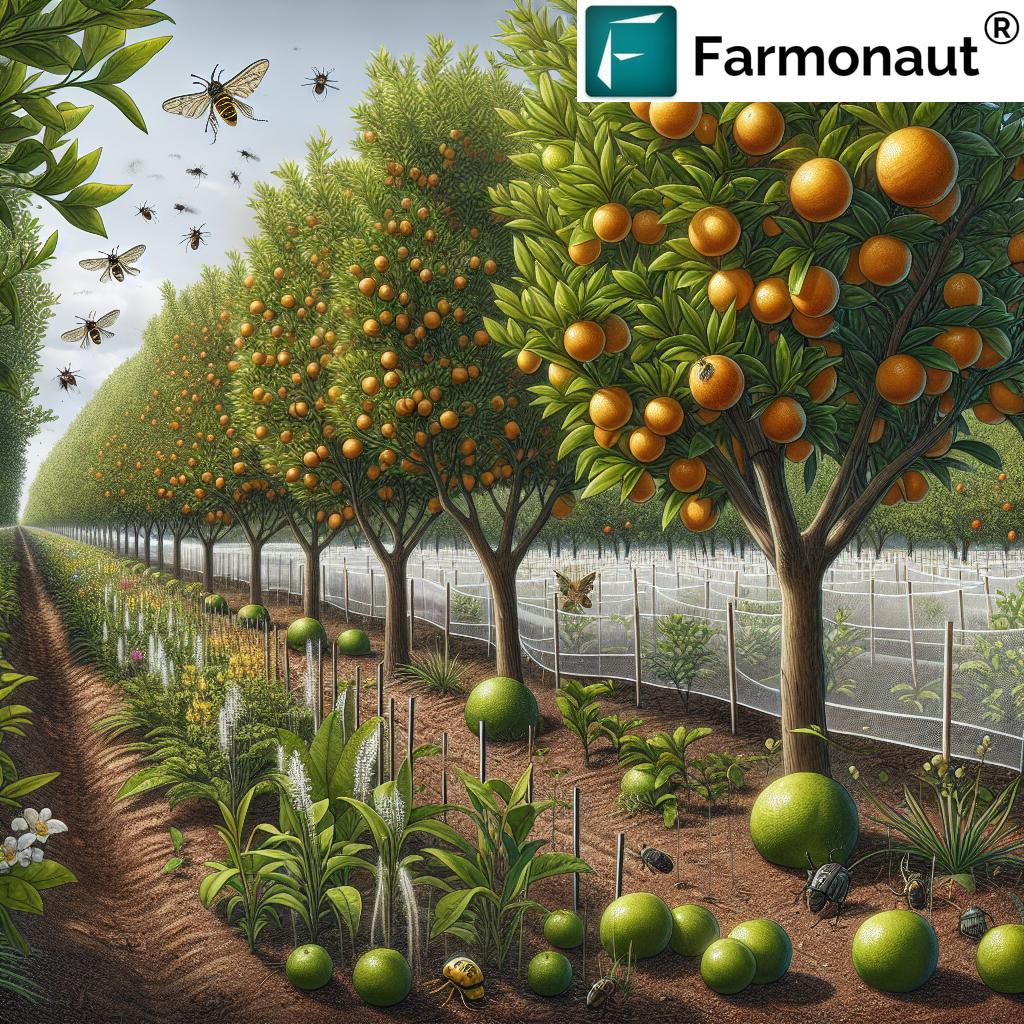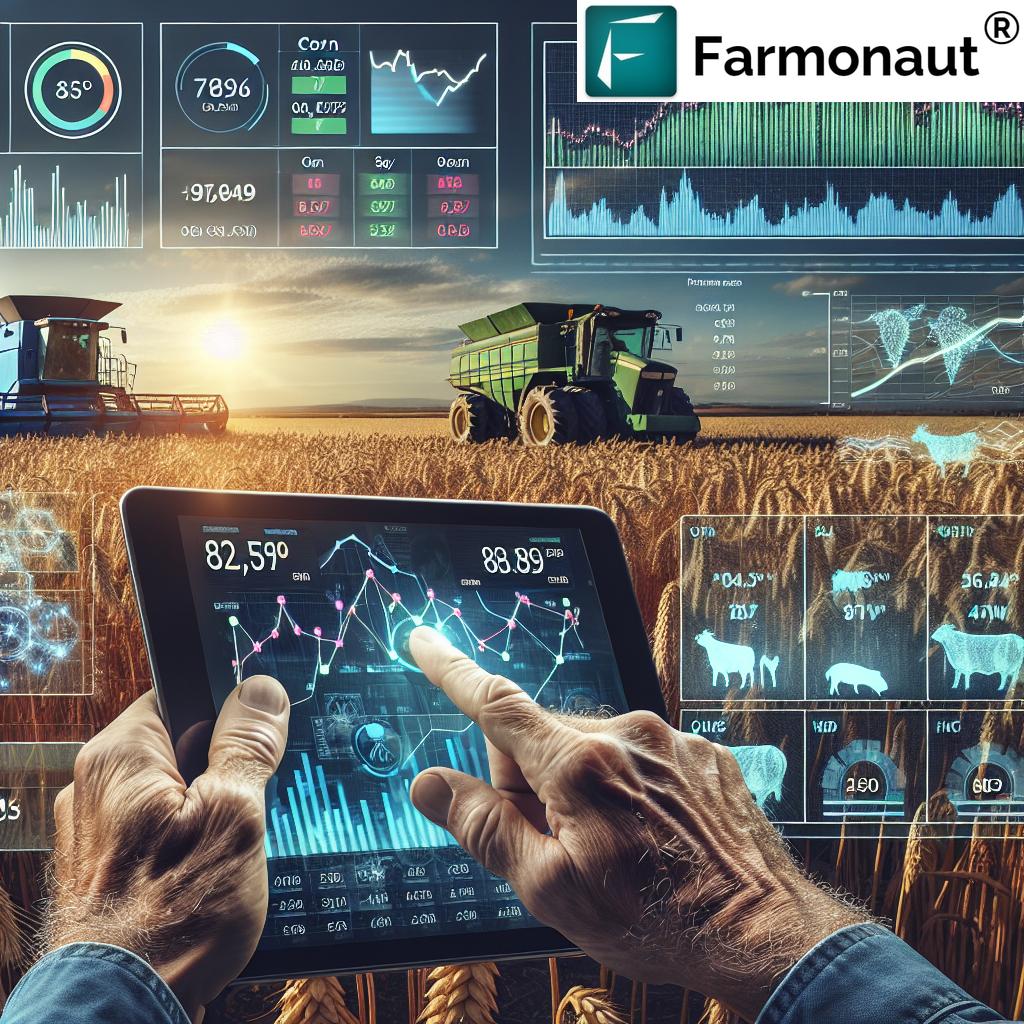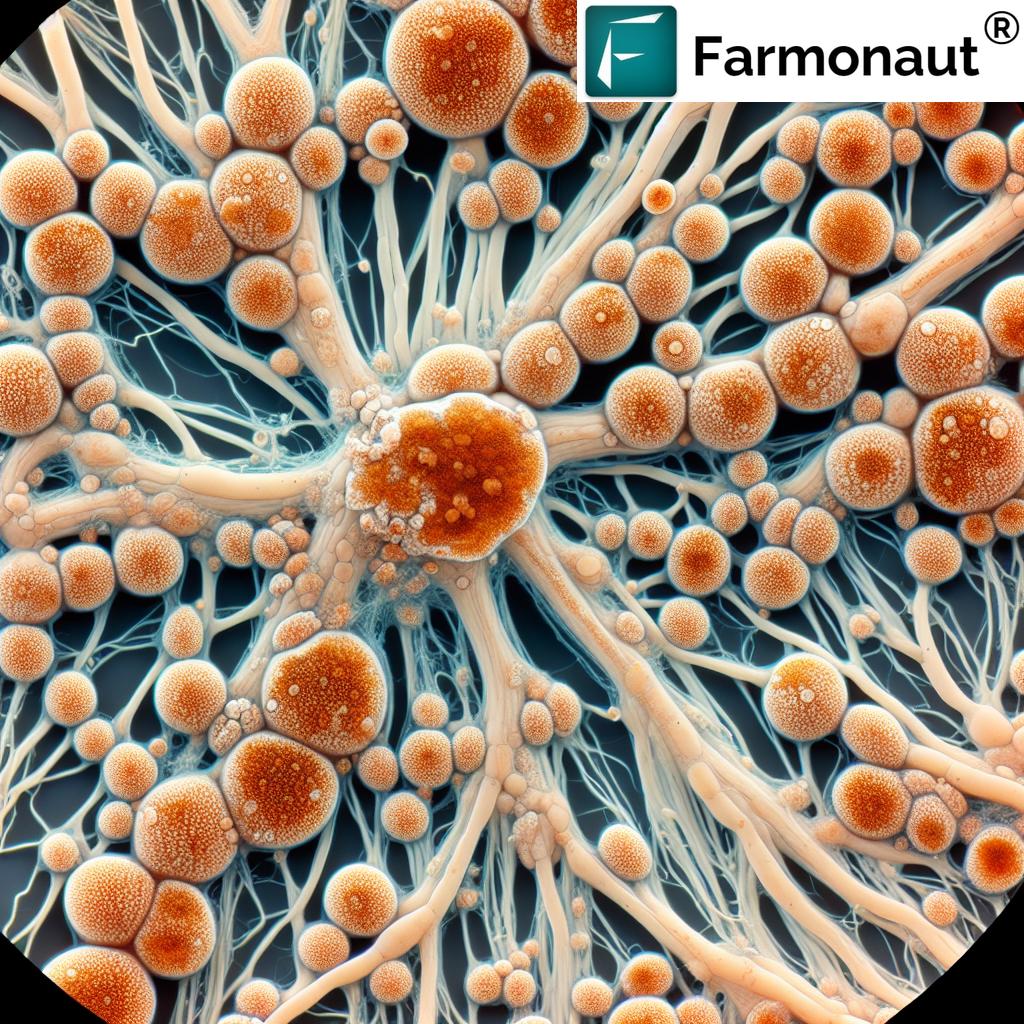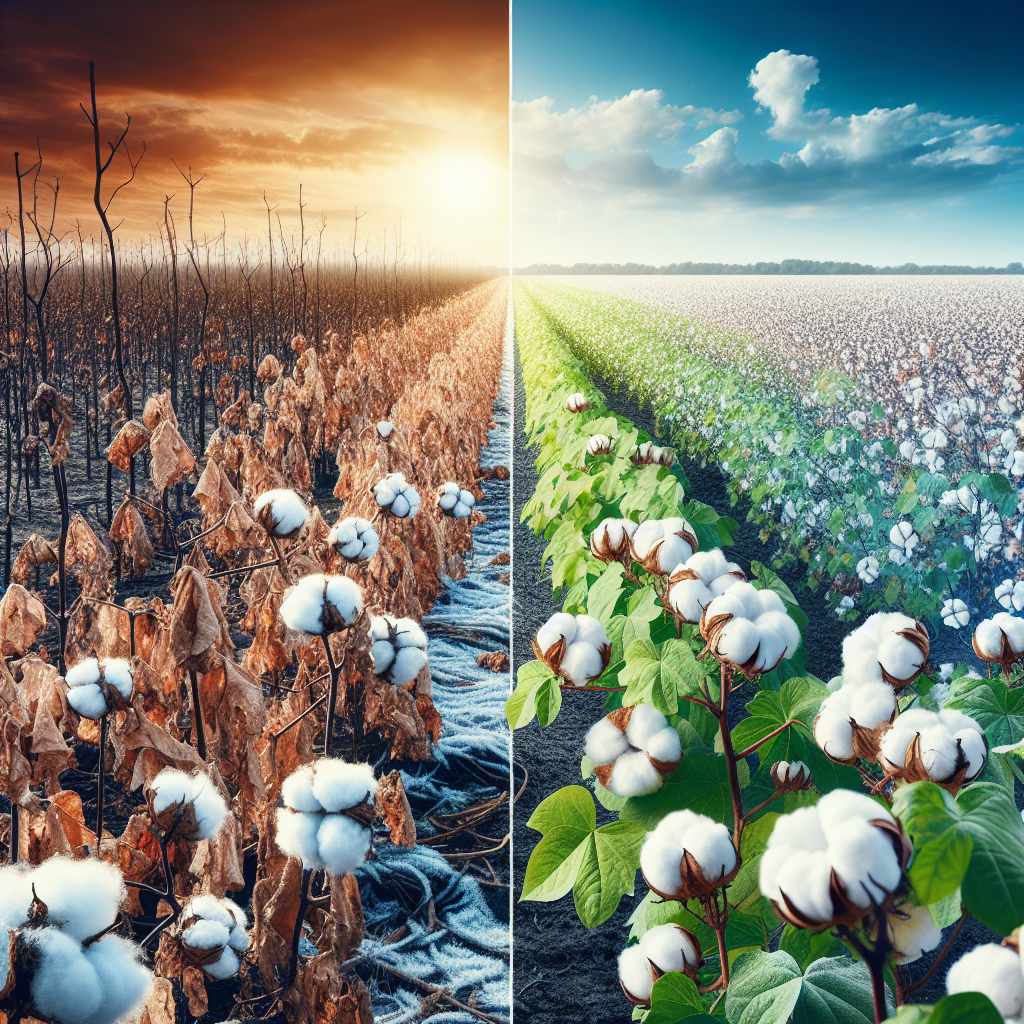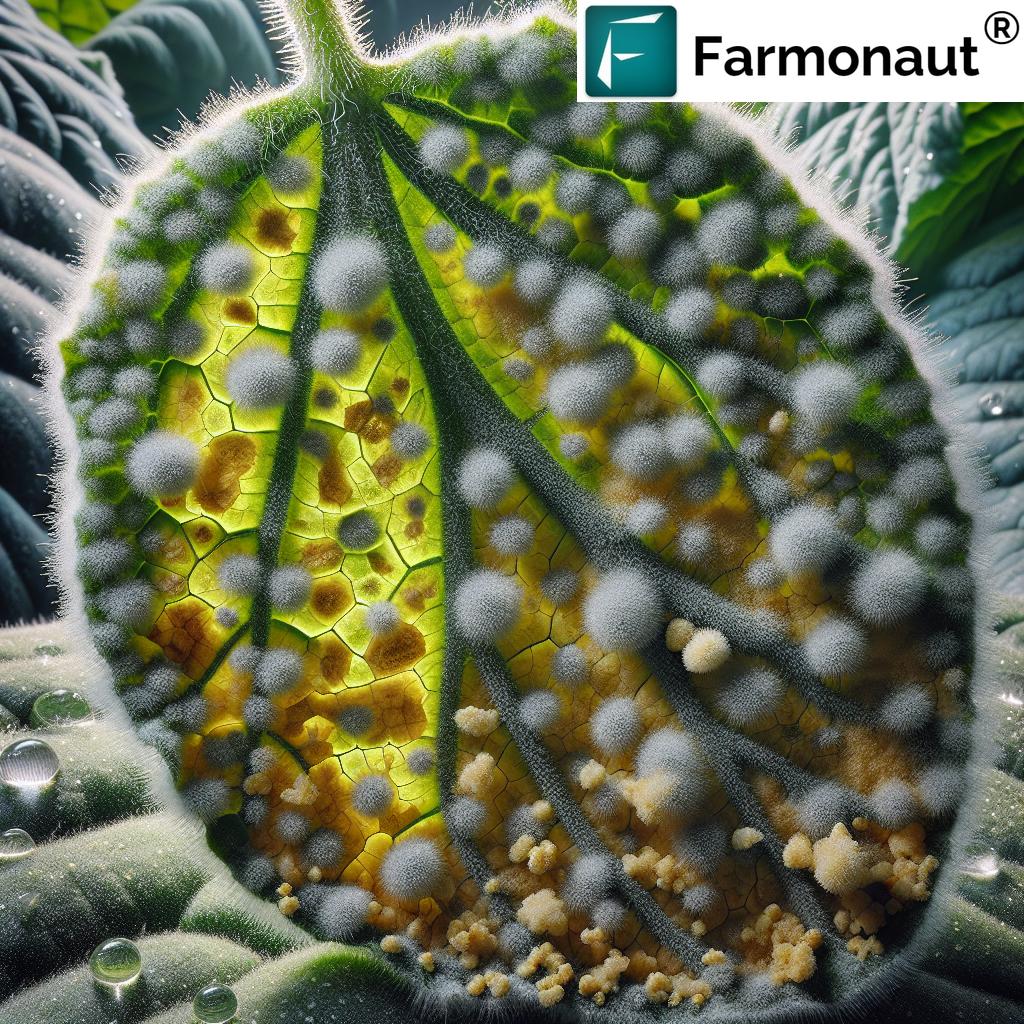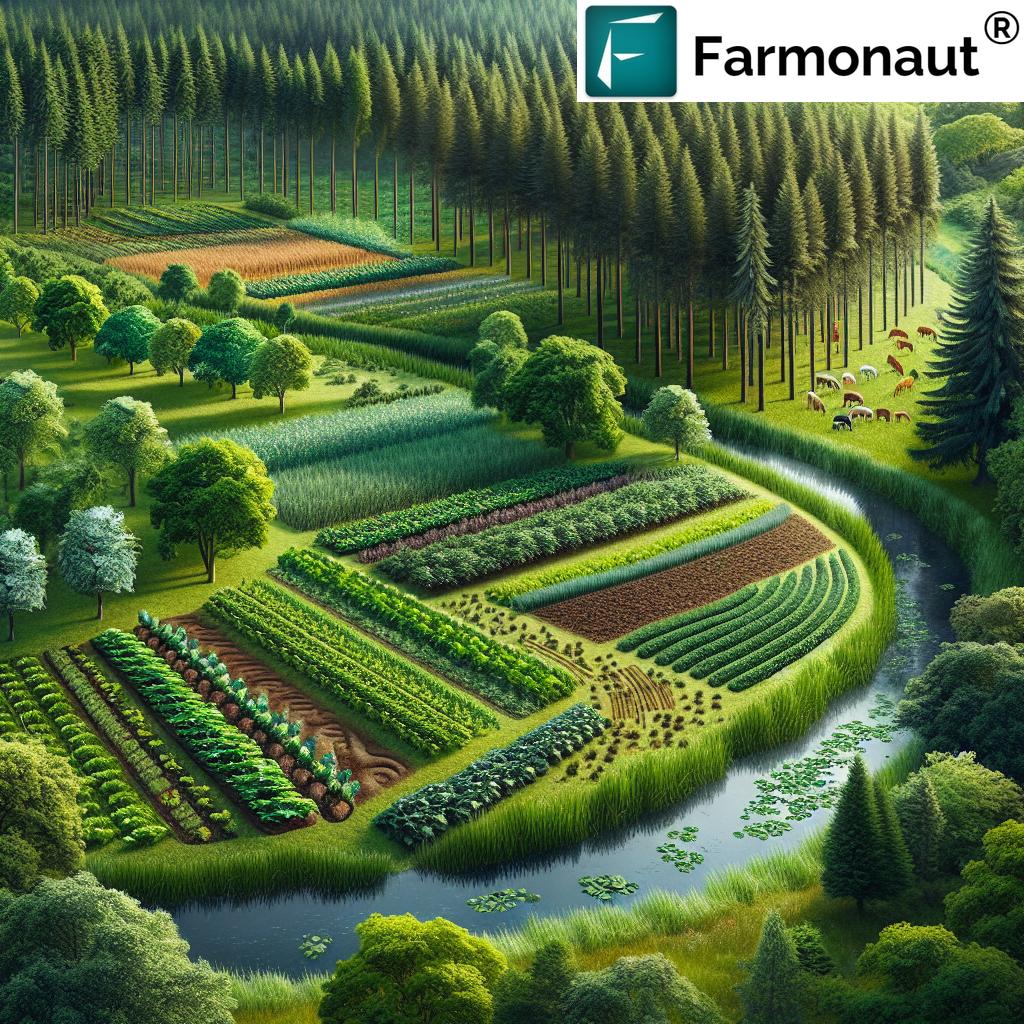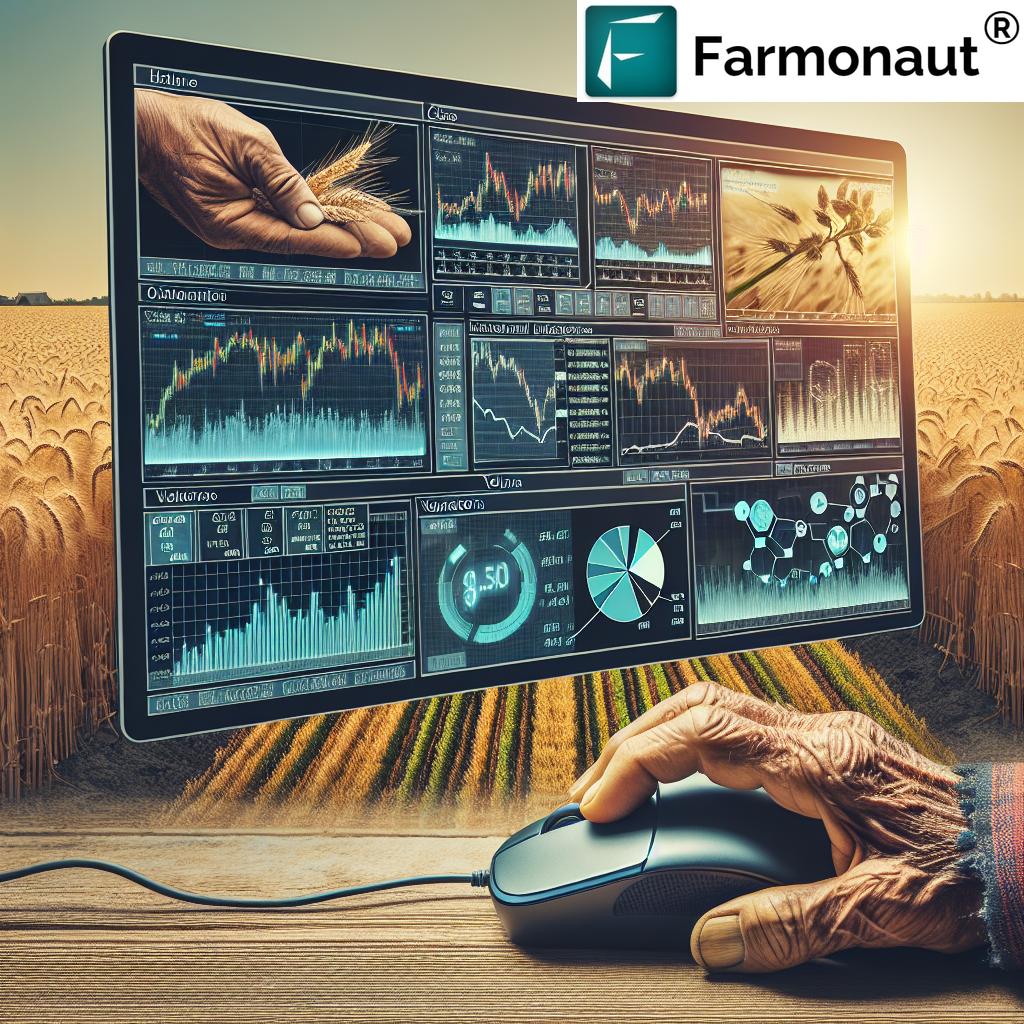Sustainable Development in Agriculture: 7 Practices 2025
“By 2025, sustainable agriculture could reduce water usage by up to 30% through advanced irrigation and soil management practices.”
Sustainable Development in Agriculture: A 2025 Perspective
Sustainable development in agriculture is rapidly gaining prominence as the world’s population increases and concerns around food security, climate change, and resource depletion intensify. In 2025, we stand at a critical crossroads: conventional agricultural practices have led to environmental degradation, biodiversity loss, and overuse of natural resources, making it imperative to transition toward sustainable agriculture development. This approach emphasizes the responsible management of soil, water, and genetic resources while balancing productivity, environmental stewardship, and social equity.
With sustainability at its core, agriculture sustainable development in 2025 integrates innovative methods—ranging from precision agriculture, conservation tillage, and smart resource management, to the empowerment of rural communities. Now more than ever, establishing systems that meet today’s food and bioenergy demands without compromising future generations’ needs is crucial. In this comprehensive guide, we’ll explore seven pivotal sustainable practices, their real-world impacts, and how digital technologies like satellite-based monitoring are revolutionizing the journey toward global agricultural sustainability.
Introduction to Sustainable Agriculture Development
Agriculture remains the backbone of global food security, rural livelihoods, and economic development. As the world’s population is projected to reach nearly 8.5 billion by 2030, the demand for food, fiber, and bioenergy intensifies. However, the continued use of conventional farming methods has often led to soil degradation, water depletion, and habitat loss. This scenario makes sustainable development on agriculture an indispensable framework—ensuring that both current and future generations can flourish.
The 2025 perspective on sustainable agriculture is built on a holistic approach—one that balances eco-friendly practice adoption, resilient cropping and farming systems, and the integration of modern digital tools. By focusing on key principles—environmental, economic, and social sustainability—stakeholders can help transform the agricultural landscape and secure a viable, productive, and equitable future for rural and farming communities worldwide.
Key Principles of Sustainable Development in Agriculture
- Balance and Stewardship: Ensures that agricultural development increases yield and farmer income without compromising soil, water, and biodiversity.
- Resource Management: Promotes the responsible use of land, water, organic waste, and genetic resources to minimize depletion and conserve fertility.
- Ecological Integrity: Integrated practices maintain soil health, reduce chemical inputs, and foster biodiversity.
- Social and Economic Equity: Focuses on the empowerment, welfare, and fair income of farming communities, ensuring access to knowledge, technology, and markets.
- Collaboration and Innovation: Encourages global, cross-sectoral cooperation and the integration of digital and satellite technologies for smarter resource management.
- Resilience to Climate Change: Methods such as carbon sequestration, cover cropping, and carbon footprint monitoring help adapt agriculture to a changing world.
These principles underpin all initiatives for sustainable development in agriculture, with a renewed focus for 2025 and beyond.
“Seven key sustainable practices may boost crop yields by 20% while preserving biodiversity and soil health by 2025.”
7 Practices: Sustainable Development in Agriculture for 2025
Seven transformative practices have emerged as best-in-class for advancing agriculture sustainable development. They embody the principles outlined above, blending traditional ecological knowledge and state-of-the-art technology, ensuring improvements in productivity, resource management, and resilience.
- Conservation Tillage
- Integrated Pest Management (IPM)
- Crop Rotation and Diversified Cropping Systems
- Precision Agriculture & Digital Technologies
- Organic Farming & Organic Waste Recycling
- Climate-Smart Agriculture & Carbon Sequestration
- Agroforestry and Cover Cropping
1. Conservation Tillage: Reducing Soil Disturbance, Increasing Fertility
Conservation tillage refers to methods that limit soil disruption compared to traditional plowing or full inversion tillage. This sustainable development in agriculture practice helps maintain soil structure, boosts organic matter, reduces erosion, and preserves soil moisture.
- Key Elements: No-till, strip-till, and reduced-till techniques.
- Benefits: Improved water retention, lower fuel and labor costs, reduced soil compaction, higher carbon sequestration.
- 2025 Impact: Conservation tillage is expected to become mainstream, supported by digital monitoring tools such as satellite imagery and soil moisture analytics.
2. Integrated Pest Management (IPM): Reducing Chemicals, Enhancing Biodiversity
Integrated Pest Management is an ecological approach combining biological, cultural, mechanical, and chemical tools to control pests sustainably. By using natural predators or beneficial insects, crop rotation, and targeted chemical application, IPM reduces reliance on synthetic pesticides.
- Key Elements: Monitoring pest populations, establishing damage thresholds, and deploying multi-faceted controls.
- Benefits: Lower pesticide residues, protection of pollinators, improved resistance management, and preservation of biodiversity.
- 2025 Impact: Widespread adoption, assisted by precision agriculture and digital pest surveillance platforms.
3. Crop Rotation and Diversified Cropping Systems
Crop rotation involves alternating different types of crops in the same field across seasons. Diversified cropping includes intercropping, mixed cropping, and polyculture.
- Key Elements: Strategic selection of complementary crops, breaking pest cycles, optimizing nutrient usage.
- Benefits: Enhanced soil fertility, improved resilience to diseases and pests, better nutrient cycling, and risk management.
- 2025 Impact: Digital mapping and remote sensing are optimizing rotation patterns, with data-driven recommendations now possible for even small farmers using platforms such as Farmonaut.
4. Precision Agriculture & Digital Technologies
Advances in precision agriculture are driving the biggest transformation in sustainable agriculture development. These practices use data-driven decisions to optimize every input—water, fertilizers, seeds, and energy—thus reducing waste and minimizing environmental impact.
- Technologies: Drones, satellite imagery, AI-driven advisory systems, GPS-guided equipment, and real-time analytics.
- Benefits: Accurate input application, water/irrigation management, minimized runoff, improved yields and farm profitability.
- 2025 Outlook: The use of satellite surveillance and API-based data integration is increasingly accessible to farmers via apps and APIs.
With the carbon footprinting solution, users can directly monitor their environmental impact and foster compliance with new global standards—empowering agricultural stakeholders to take evidence-based climate actions.
5. Organic Farming & Organic Waste Recycling
Organic farming eliminates synthetic chemicals, instead emphasizing crop rotation, compost, green manures, and biological pest control. When integrated with effective waste recycling, the cycle becomes fully sustainable.
- Elements: Using composted crop residues and livestock manures, converting organic waste to biofertilizer.
- Benefits: Enhanced soil health, improved biodiversity, and carbon sequestration, while reducing dependency on commercial chemical inputs.
- 2025 Trends: The circular economy model—shown in Ontario’s agricultural plastic recycling—is gaining momentum globally, demonstrating the eco-socio-economic benefits of closed-loop systems.
6. Climate-Smart Agriculture & Carbon Sequestration
Climate-smart agriculture (CSA) focuses on increasing the resilience of farming systems while mitigating greenhouse gas emissions. Agroecological practices such as cover cropping, reduced-tillage, crop-livestock integration, and rotational grazing bolster carbon sequestration and climate adaptation.
- Key Elements: Monitoring carbon offset, adjusting practices to local conditions, measuring outcomes via environmental impact tools.
- Benefits: Enhanced resilience to drought and extreme weather, reduced emissions, improved farmer incomes through carbon credits and climate finance.
- 2025 Solutions: Advanced satellite monitoring and real-time carbon tracking—like Farmonaut’s carbon footprint tool—help guide on-ground decisions and reporting.
7. Agroforestry and Cover Cropping
Agroforestry integrates trees and shrubs into crop or livestock systems, while cover cropping intersperses fast-growing plants between main crops. These cultivate ecological resilience and diversify farm incomes.
- Features: Shade provision, windbreaks, pollinator habitat, nutrient cycling, and reduction of soil erosion.
- Benefits: Higher biodiversity, improved water retention, carbon storage, and greater economic stability.
- 2025 Adoption: Increasingly promoted in both developed and developing regions—supported by satellite-based analysis for optimal species selection and monitoring.
Comparative Summary: Seven Sustainable Agricultural Practices for 2025
| Practice Name | Description | Estimated Impact on Yield (%) | Reduction in Resource Use (%) | Environmental Benefit | Implementation Difficulty | 2025 Adoption Rate (%) |
|---|---|---|---|---|---|---|
| Conservation Tillage | Reduces soil disturbance, conserves moisture, improves fertility | +10–20% | Water: 20–30%, Fuel: 40% | Soil health, erosion control | Medium | 55–65% |
| Integrated Pest Management | Combines biological and mechanical pest controls, reducing chemicals | +8–15% | Chemicals: 30–50% | Biodiversity, pollinator protection | Medium | 60% |
| Crop Rotation & Diversified Cropping | Alternating crops or using intercropping/polycluture systems | +15–22% | Fertilizer: 20%, Water: 12% | Soil fertility, pest cycle breakage | Low | 66% |
| Precision Agriculture & Digital Tech | Digital tools/maps for accurate input use and monitoring | +15–30% | Water: 30%, Fertilizers: 25% | Reduced runoff, optimized inputs | Medium/High | 52% |
| Organic Farming & Recycling | Avoids synthetic chemicals; recycles organic waste as fertilizer | +12–18% | Chemicals: 100%, Waste: 80% | Soil biodiversity, carbon sequestration | Medium | 19% |
| Climate-Smart Ag & Carbon Sequestration | Practices that adapt/migrate to climate risks and trap carbon | +8–16% | Emissions: 12–19% | Mitigates climate change | Medium | 34% |
| Agroforestry & Cover Cropping | Trees/shrubs with crops, plus non-cash cover crops for soil | +10–22% | Water: 10%, Fertilizer: 8% | Biodiversity, carbon storage | Medium | 25% |
The Role of Digital Solutions & Satellite Insights in Sustainable Agriculture
Sustainable development in agriculture in 2025 is deeply intertwined with digital innovations and data science. Key digital breakthroughs include:
- Crop health monitoring via satellite imagery for real-time detection of stress, disease, and nutrient deficits.
- Blockchain-based traceability ensures transparency in the food supply chain, as showcased in Farmonaut’s traceability tools. This builds trust, ensures product authenticity, and reduces fraud.
- Fleet and resource management: Digital platforms like with fleet management features streamline logistics, boost equipment efficiency, and track resource use, supporting large, distributed agricultural operations.
- API integration: With offerings such as Farmonaut’s Satellite Weather & Farm API Developer Docs, developers can directly embed agri-data streams into custom solutions for regional and global operations.
- Crop loan and insurance verification: Services such as farm-level remote verification for crop loans and insurance reduce fraud, lower administrative costs, and improve financial inclusion for rural farmers.
These technological enablers support every pillar of sustainable agriculture development. Through real-time analytics, remote field access, and digital traceability, agricultural systems become more resilient, fair, and aligned with sustainability goals.
Ensuring Economic Sustainability & Social Equity in Agricultural Development
No system can be truly sustainable unless economic and social factors are prioritized alongside environmental sustainability. Here’s why these elements are foundational to agriculture sustainable development in 2025:
1. Economic Viability
- Productivity and Profitability: Diversified cropping, value addition, and direct digital market access support higher and fairer farm incomes.
- Market Access via Blockchain: Technology-powered transparency and digital certification—like Farmonaut’s traceability—prevent exploitation and ensure premium markets for quality produce.
- Infrastructure Investments: Modern storage, rural roads, and cold chains help minimize post-harvest losses and smooth market fluctuations.
2. Social Sustainability
- Knowledge and Education Transfer: Training, extension, and digital advisory systems make modern techniques accessible to all farmers.
- Empowerment of Rural Communities: Participatory resource management, gender inclusion, and support for indigenous knowledge strengthen the rural social fabric.
- Income Security: Farm finance, crop insurance, and digital payment systems protect farmers from shocks and risks.
By fostering these conditions, we secure a just and sustainable agricultural future that benefits both smallholders and the global food system.
Policies, Global Collaboration, and the SDGs: Shaping Agriculture Sustainable Development
A robust policy framework is crucial for mainstreaming sustainable development in agriculture by 2025. These frameworks establish supportive environments and incentivize positive behavior among farmers, businesses, and consumers. Key policy levers include:
- Agroecology Promotion: Subsidies and support for soil-friendly inputs, organic certification, and diversified farming systems.
- Penalty for Harmful Practices: Penalties for deforestation, resource depletion, and unsafe chemical use.
- Global Collaboration: The United Nations Sustainable Development Goals (SDG 2 and SDG 15) set global priorities toward zero hunger and land conservation.
- Public-Private Funding: Mechanisms for research, innovation, and rural infrastructure.
In 2025, these measures support the rapid diffusion of sustainable systems—accelerated by cross-sector digital interoperability and satellite-based monitoring.
Challenges and Ways Forward for Agriculture Sustainable Development
Main Hurdles in 2025 and Beyond
- Degradation: Persistent land degradation, water scarcity, and pollution threaten advances.
- Transition Barriers: Financial and educational gaps slow the shift to sustainable practices, especially among smallholders and women farmers.
- Climate Volatility: More frequent droughts, floods, and extreme heat events challenge farming resilience.
- Knowledge Divide: Rural communities often struggle to access the latest innovations or digital platforms.
Opportunities & Solutions
- Circular Economy: Turning organic waste into farm nutrients supports closed-loop systems.
- Technology Transfer: Targeted extension, mobile apps, and remote training can build widespread capacity.
- Digital Equity: Making digital advisory and analytics affordable (as delivered by Farmonaut) to even the smallest user, promotes true inclusivity.
- Collaboration: Engaging farmers, researchers, and policymakers creates more resilient and customized local solutions.
In summary, success relies on integrating environmental, economic, and social approaches—leveraging both ancestral knowledge and the latest digital innovation. By 2025, these combined forces will determine whether agriculture can meet humanity’s needs, ensure rural security, and preserve our planet for future generations.
Farmonaut Apps & Platform Access
Explore how satellite-driven insights can empower your approach to sustainable development in agriculture! Access Farmonaut’s platform or download the mobile app to unlock real-time crop health monitoring, environmental tracking, and data-driven advisory.
Developers: Integrate robust, satellite-sourced data into your custom analytics tools with the Farmonaut API and review the developer documentation for agricultural, environmental, or climate-based applications.
Frequently Asked Questions (FAQ): Sustainable Agriculture Development 2025
- What is sustainable development in agriculture?
- Sustainable development in agriculture means managing crops, livestock, soils, water, and natural resources in a way that boosts productivity, preserves or restores environmental quality, and supports social equity—meeting today’s needs without compromising future generations’ ability to meet theirs.
- Why is sustainable agriculture so critical in 2025?
- By 2025, global population and resource pressures have intensified, making unsustainable, conventional practices insufficient. Sustainable agriculture is the key to resilient food systems, land conservation, and climate change adaptation.
- What are the environmental benefits of sustainable development on agriculture?
- Benefits include improved soil fertility, reduced chemical pollution and runoff, enhanced biodiversity, water conservation, climate change mitigation, and healthier rural environments.
- How do digital and satellite technologies support sustainable agriculture?
- Technologies like those delivered by Farmonaut provide real-time monitoring, environmental analysis, and precision recommendations, allowing farmers and agribusinesses to make data-driven, sustainable decisions.
- How can farmers balance economic viability and sustainability?
- By adopting practices that reduce cost and increase output—such as precision input use, diversified cropping, and digital market access—farmers can enhance profitability while maintaining social and environmental standards.
- What support exists for adopting sustainable practices in 2025?
- Education, extension services, digital advisory platforms, and policy incentives support farmers’ transition to sustainable agriculture development. Access to quality infrastructure and climate finance is also improving.
- Which Farmonaut products help transition to sustainable agriculture?
-
- Carbon Footprinting for measuring and managing agricultural climate impacts.
- Product Traceability for transparency and food safety.
- Fleet Management for resource and logistics efficiency on large farms.
Farmonaut Subscription Plans
Experience the benefits of affordable satellite-based resource monitoring, environmental impact analysis, and digital field management for sustainable agricultural success. Explore our flexible subscription plans designed for individuals, enterprises, governments, and developers:
Conclusion: Securing Food and Rural Futures Sustainably
Sustainable development in agriculture is not merely an option; in 2025, it is the imperative to ensure food security and environmental stewardship in a changing world. By adopting the seven key sustainable practices—grounded in ecological, economic, and social principles—farmers and stakeholders can build resilient systems to meet the needs of growing populations without compromising the planet’s health.
Modern tools, like those provided by Farmonaut, are democratizing access to critical data and insights, making sustainability achievable for all, regardless of farm size or location. Whether it’s through real-time monitoring, blockchain traceability, or fleet/resource optimization, every innovation helps cultivate a more sustainable, equitable, and resilient food system for generations to come.
We invite readers to explore the technology, adopt proven practices, and join the global movement toward sustainable agricultural development. Our collective actions today will secure a better, more sustainable future for all.


